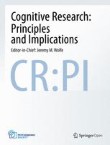Cognitive Research: Principles and Implications is affiliated with The Psychonomic Society
Improving face identification with specialist teams
People vary in their ability to identify faces, and this variability is relatively stable across repeated testing. This suggests that recruiting high performers can improve identity verification accuracy in ap...
